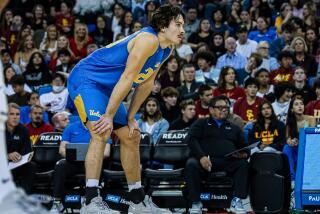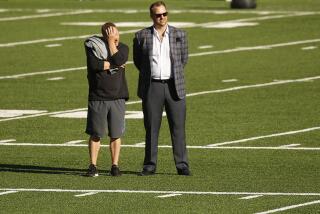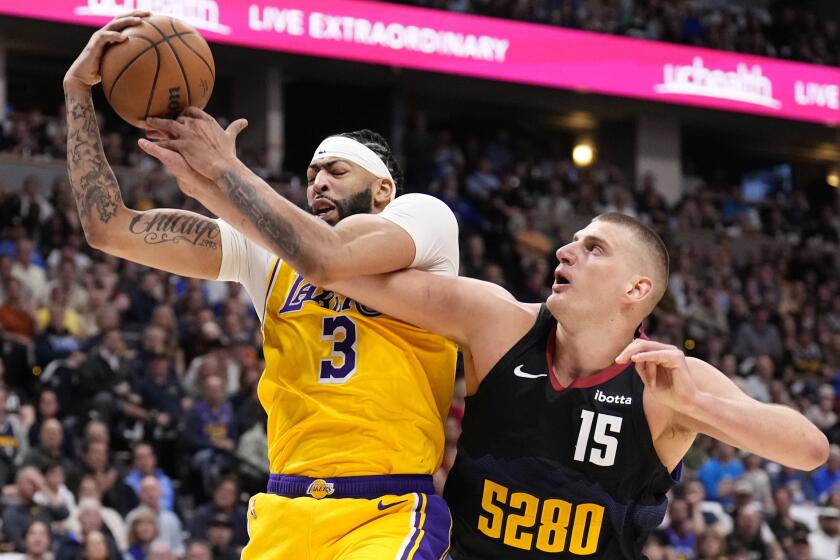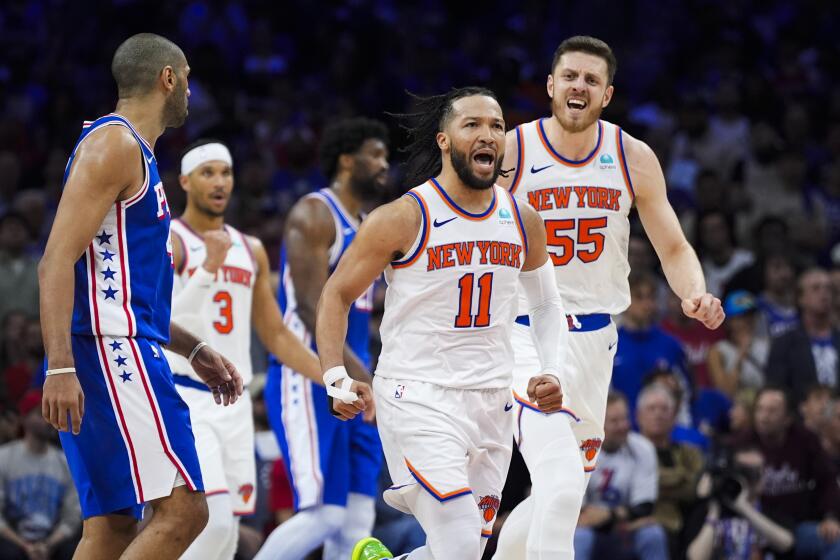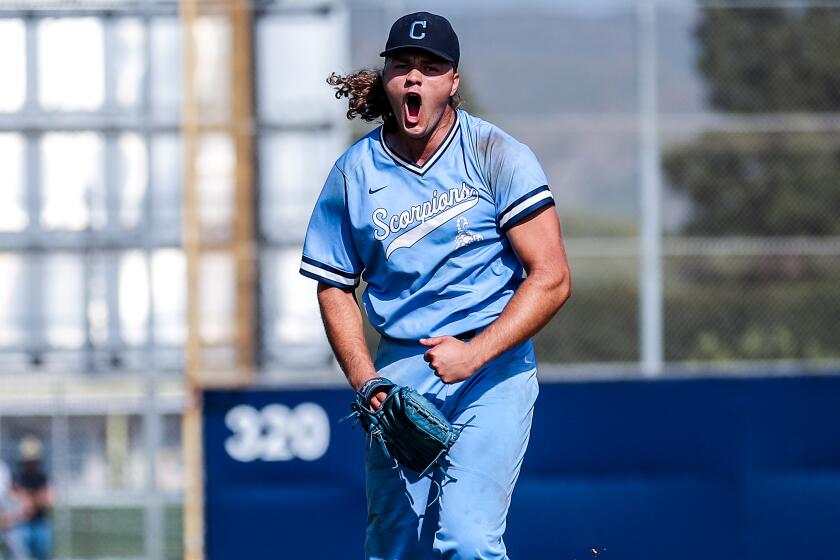Bykova’s Win at Braemar Tournament May Signal Upswing in Soviet Tennis
When Tuesday’s opening-round match between Natlie Bykova and Jana Novotna began at the Braemar Country Club in Tarzana, it looked like a short afternoon for Bykova.
Even Jimmy the Greek could have picked this one.
Bykova, from the Soviet Union, is ranked 255th in the world. And she was meeting a player seeded second in the $25,000 United States Tennis Association tournament that runs through Sunday at Braemar. Novotna, ranked 170th in the world, had beaten Bykova in three of their four meetings. So much for handicapping.
In an afternoon that grew increasingly bitter as it grew longer, Bykova upset Novotna, 2-6, 7-5, 6-2. At one point, arguments from both sides over line calls became harsh enough for the umpire to call in help in the form of three line judges.
But nothing seemed to help Novotna. Crisp, hard volleys that had nicked the corners in the first set began to smash harmlessly into the net midway through the second set as the momentum shifted to the Bykova, who eliminated the unforced errors of the first set and began to play a steady, controlled game. The 18-year-old Novotna was ahead, 3-1, in that second set before disaster struck.
Bykova’s comeback over Novotna could be a portent of a shift in the balance of power.
Nobody questions the power of Czechoslovakian tennis. At least nobody who has ever heard the name Martina. The United States might now be home for Martina Navratilova, the world’s No. 1 woman player, but her roots are in her native Czechoslovakia, as are those of Ivan Lendl, No. 1 among the men.
But the Soviet Union?
Their best athletes in the past have been found at track meets, basketball arenas or ice rinks.
Now, an estimated three million people are playing tennis in Russia these days and the number might continue to grow.
“You see tennis courts everywhere in the Soviet Union,” said Valentina Sazonova, a Soviet tennis coach who has accompanied Bykova and four others on their current U.S. tour. Another Russian, Leila Meskhi, also is participating in the Braemar event, and three others will join when the Soviet contingency next moves on to a tournament in Wichita, Kan.
“We watch Wimbledon and the French Open and other tennis on television in the Soviet Union,” Sazonova said, “and the sport has become more and more popular. Favorites in Russia now are Chris Evert Lloyd, John McEnroe and Boris Becker.”
But future favorites might well be home grown. Meskhi, ranked one slot ahead of Bykova at 254th, reached the finals in Wimbledon last summer in both singles and doubles in junior competition, winning the doubles.
Both she and Bykova, 20, have been playing for 10 years. They currently train at the Zska athletic club in Moscow, working four hours a day, seven days a week.
They don’t officially get paid for any of this. There are no tennis professionals in the Soviet Union.
But there are some amateurs with considerable talent. Just ask Jana Novotna.
The field of 32 at Braemar was completed earlier Tuesday when Cinda Gurney of Palos Verdes, Nichole Porter of San Clemente, Clare Wood of England and Digna Ketelaar of the Netherlands, advanced after a two-day qualifying event.
In first-round matches Tuesday at Braemar, Cecilia Fernandez of Torrance stopped Cheryl Jones of Los Angeles, 6-0, 6-1; Maureen Drake of Canada defeated Claudia Hernandez of Mexico, 6-2, 6-1; Luciana Corsato of Brazil beat Tracie Blumentritt of Houston, 3-6, 6-2, 6-0; Kim Steinmetz of St. Louis blanked Gabriella Mosca of Argentina, 6-0, 6-0; Jennifer Goodling of York, Pa., beat Andrea Tiezzi of Argentina, 6-2, 6-3; Wendy Wood of Boston topped Karen Dewis of Canada, 6-3, 6-2; and Brenda Schultz of the Netherlands defeated Lisa Pennington of England, 6-2, 6-2.
The doubles competition begins today.
More to Read
Get our high school sports newsletter
Prep Rally is devoted to the SoCal high school sports experience, bringing you scores, stories and a behind-the-scenes look at what makes prep sports so popular.
You may occasionally receive promotional content from the Los Angeles Times.
